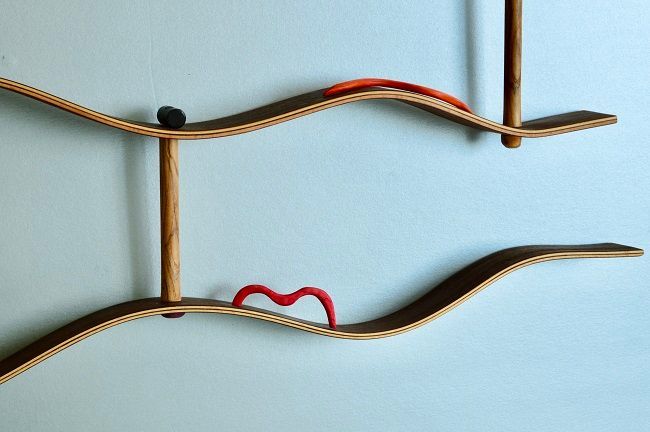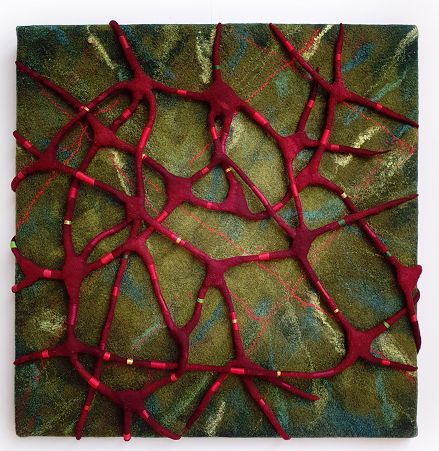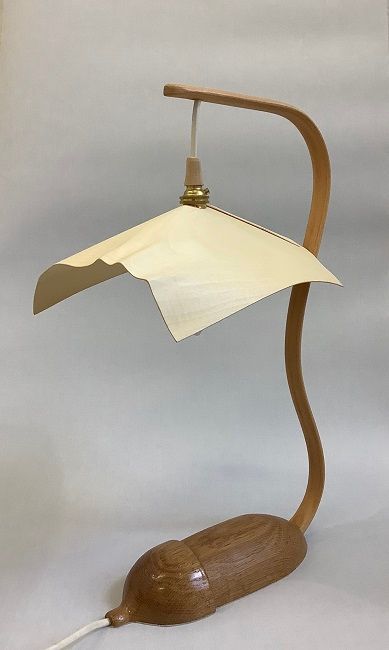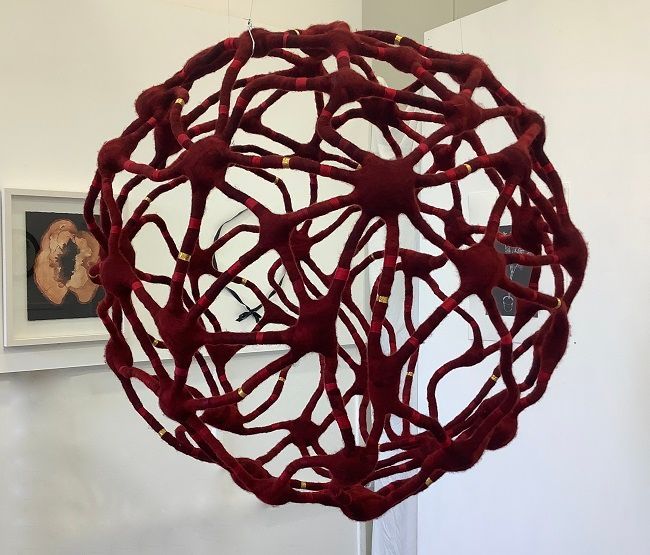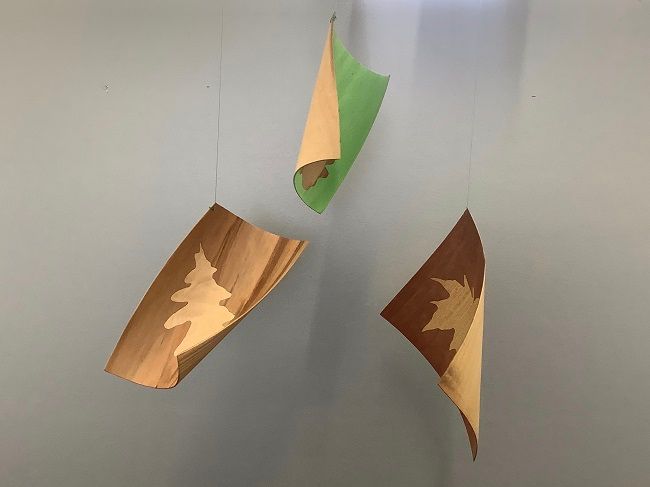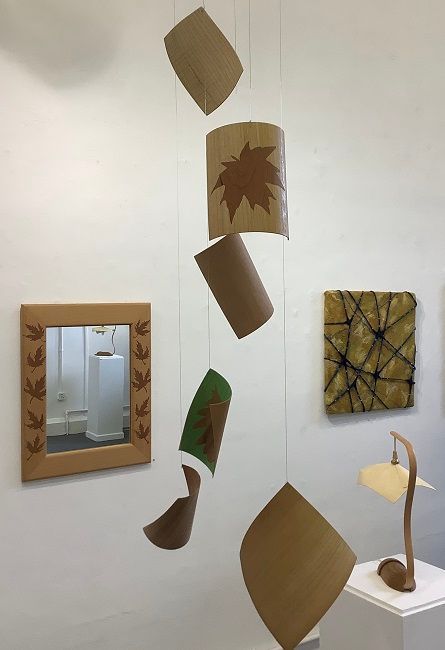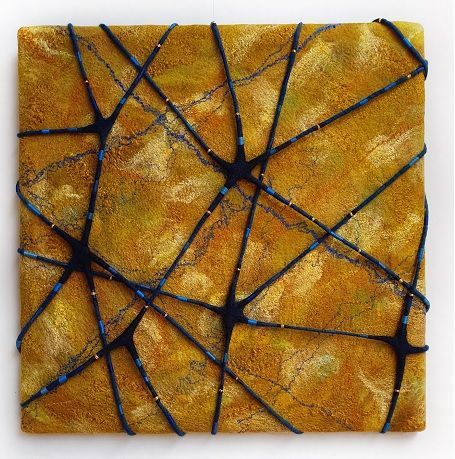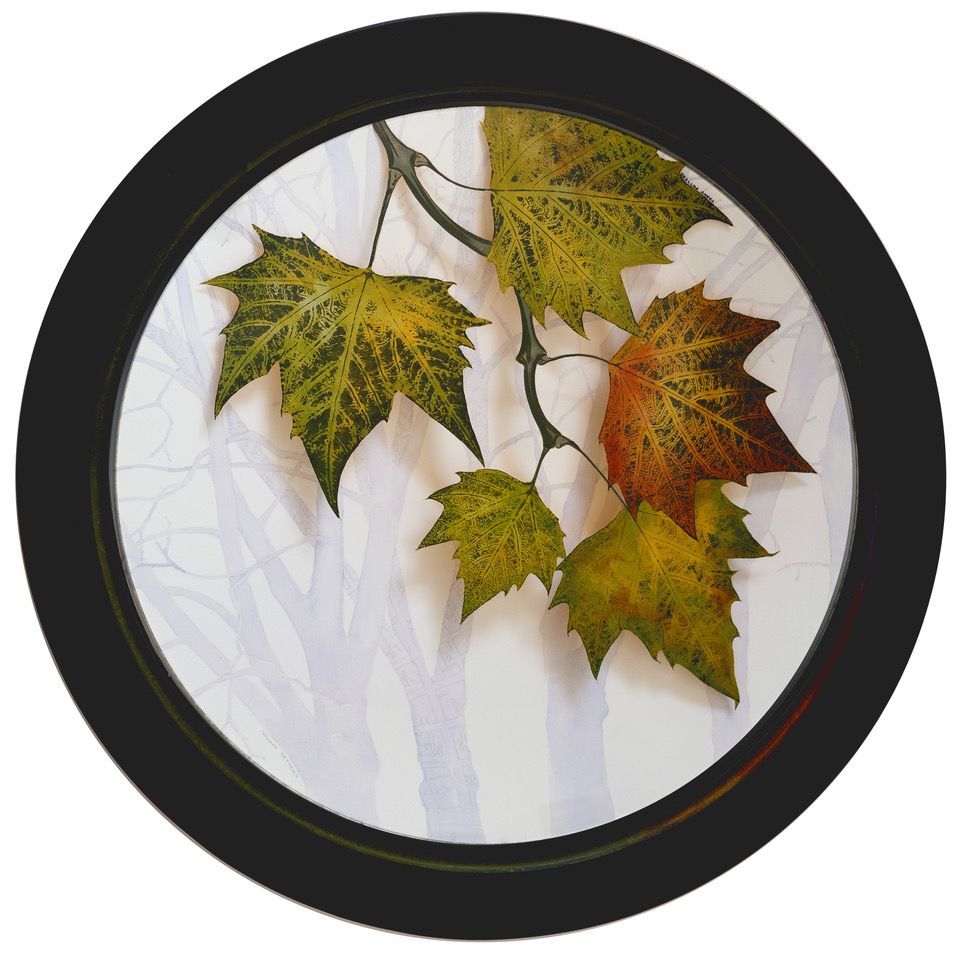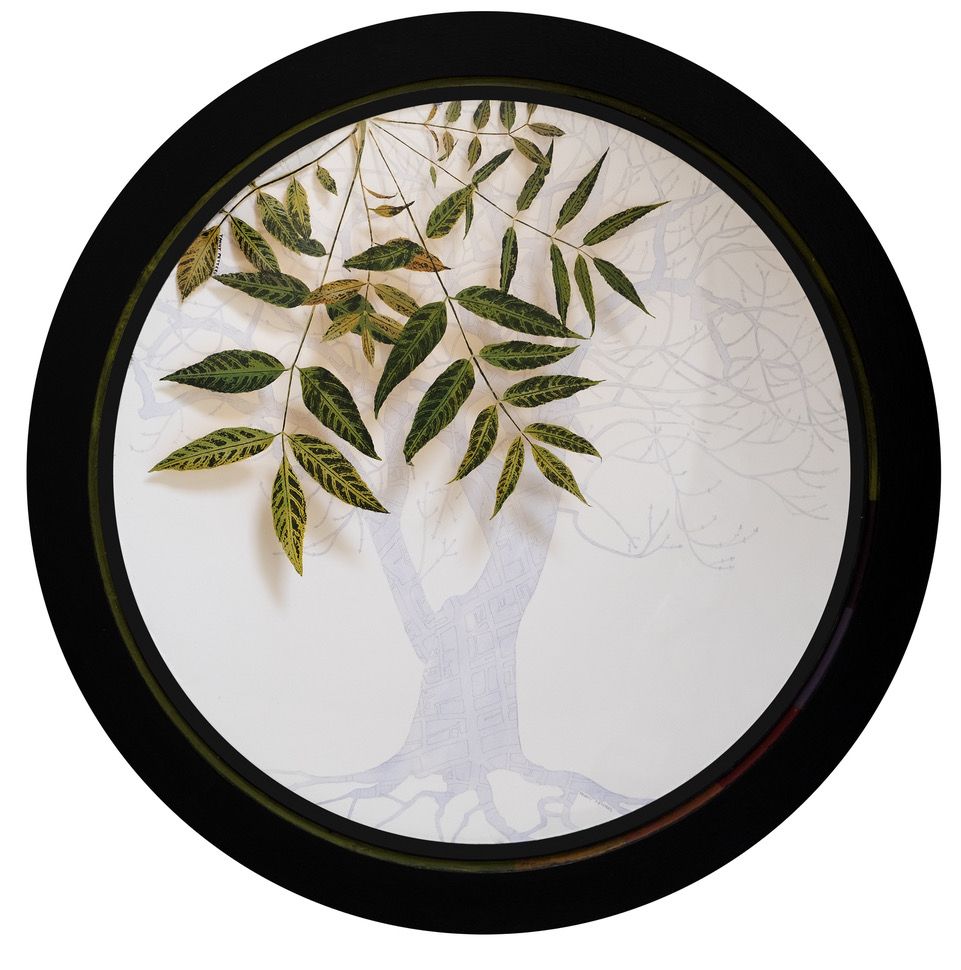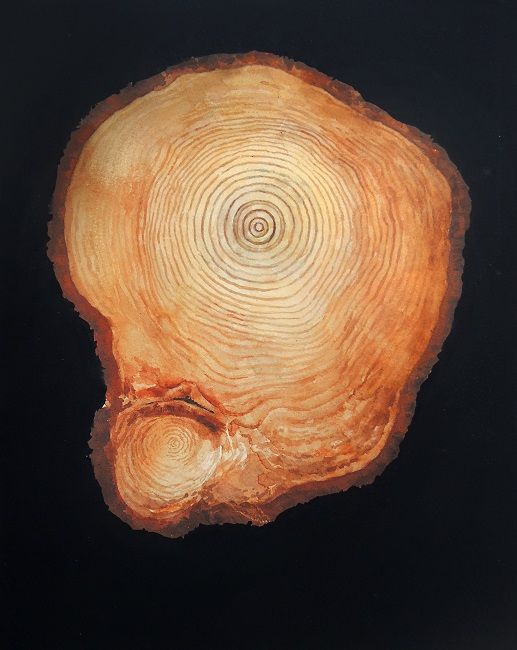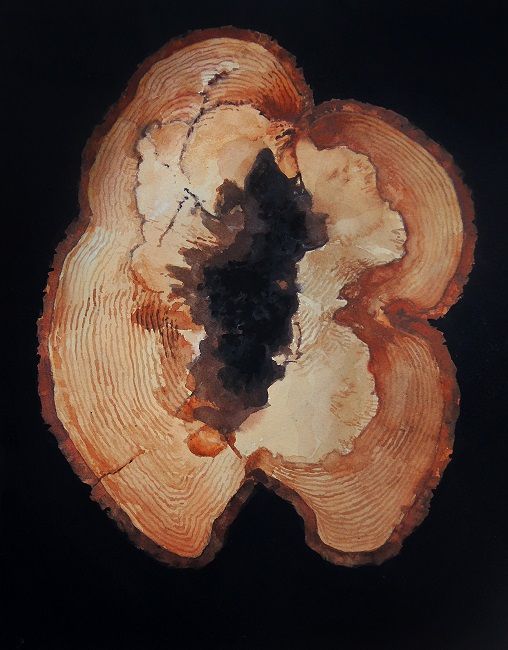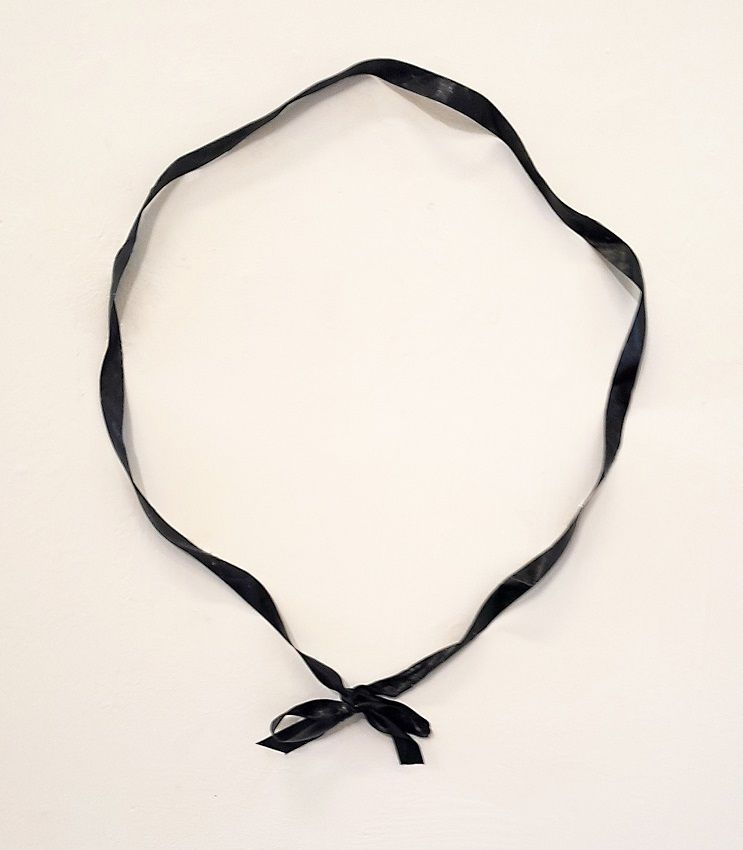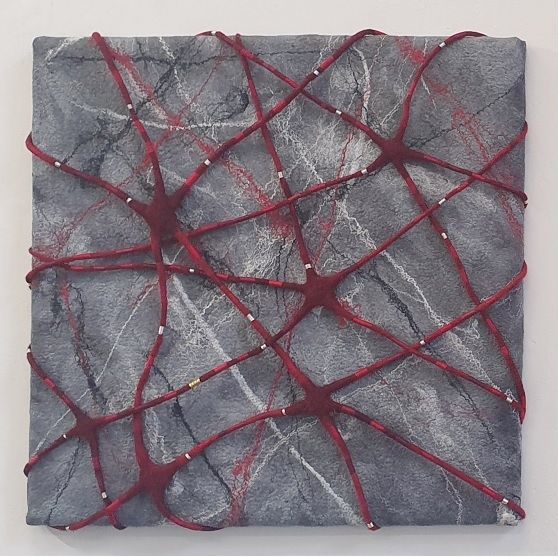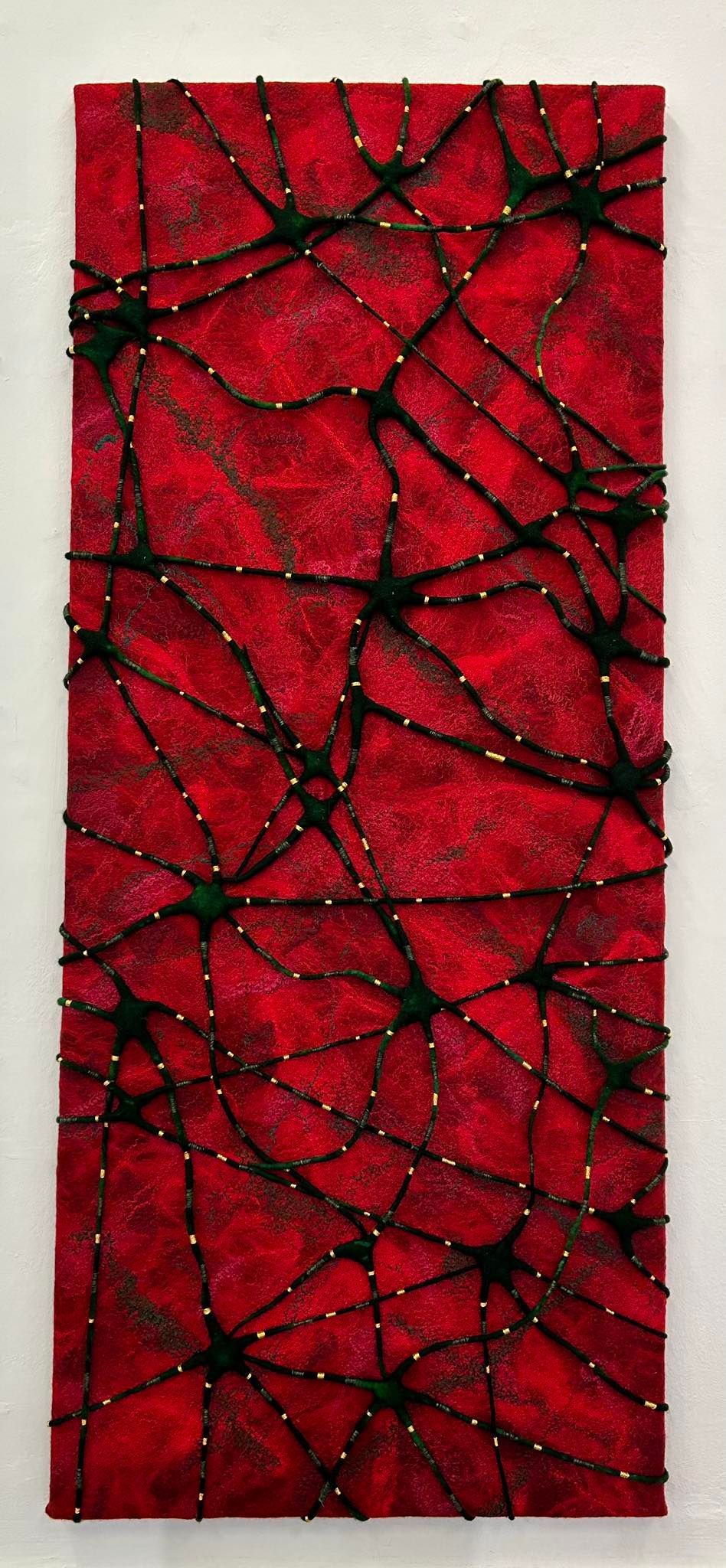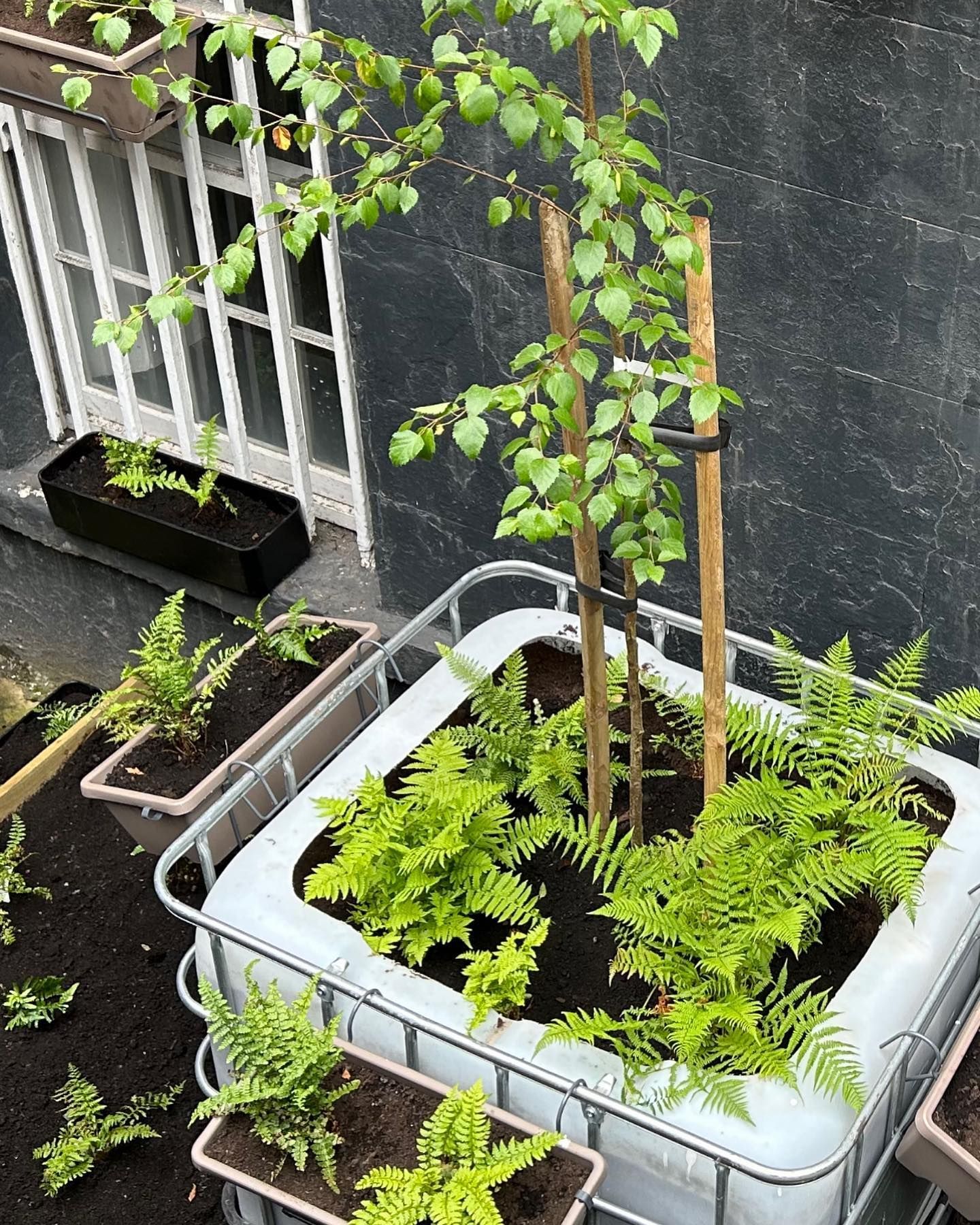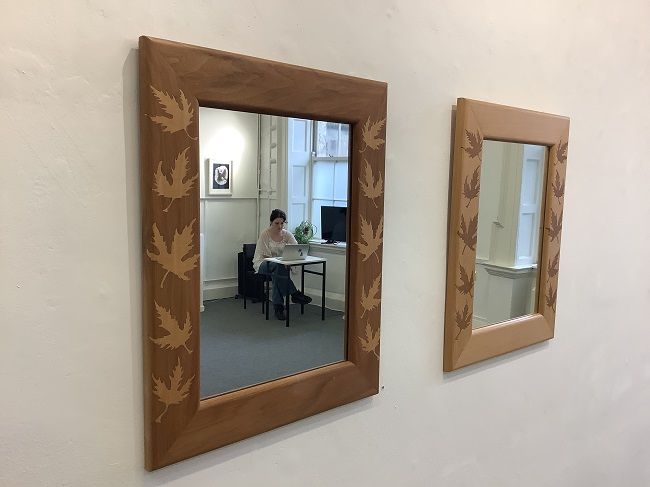Arbour Essences in Anthropocene Dublin - Four new visions for our urban forests - 14 May to 7 July 2023
Group show
Artists: Annika Berglund, Hugh Cummins, Eoin Mac Lochlainn and Yanny Petters with a small selection of works by Belvedere College's art students
Official opening: Sunday 14 May 2023, 2:30pm
Guest speaker: Pádraic Fogarty, ecologist and environmental scientist
Guest speaker: Pádraic Fogarty, ecologist and environmental scientist
The show will run until 7 July 2023.
The following panel talks will take place at the gallery in the context of this exhibition. Please email us
or call us
to confirm booking (free events)
- Thursday 18 May 2023, 6:30pm: Trees in Urban Settings
The discussion will be chaired by co-curator and author Paddy Woodworth, and the panel will include Ciarán Fallon, Director of Coillte Nature, Matthew Jebb, Director of the National Botanic Gardens, Suzanne O’Connell, Landscape Architect with DCC and Catherine Cleary, Co-founder of Pocket Forests. - Wednesday 7 June 2023, 6:30pm: Artists' Talk
The discussion will be chaired by co-curator and author Paddy Woodworth, and the panel will include the four artists in the show, namely Annika Berglund, Hugh Cummins, Eoin Mac Lochlainn and Yanny Petters.
Trees have always fascinated artists, and are often one of the first subjects children paint or draw, so they could perhaps be dismissed as a cliché topic for art. However, new discoveries about trees, and new ways of thinking about their value to humans, collectively and as individuals, perhaps offer new paths to their artistic representation. In this show we will be focusing primarily on urban trees, especially street trees....
Paddy Woodworth, introduction in the brief
prepared for the artists, following a series of conversations with co-curator gallerist Olivier Cornet.
-----------------------------------
The Olivier Cornet Gallery is delighted to present this group show curated by gallerist Olivier Cornet and author Paddy Woodworth. Four artists from the Olivier Cornet Gallery, namely Annika Berglund, Hugh Cummins, Eoin Mac Lochlainn
and Yanny Petters
have been asked to create work around trees in an urban context.
The exhibition is sponsored by Coillte Nature
and will be complemented by a selection of drawings by Belvedere College's art students
as well as a mini or 'pocket' urban forest installation - in the outdoor basement area - in collaboration with Simon O'Donnell
from the Urban Farm project at Belvedere College.
We asked each artist and Belvedere College art students (through their teacher
Martina Leddy) to describe their response to the theme of urban trees
New research points to the fact that different trees — and even different tree species — are involved in a constant exchange of resources and information via underground fungal networks, known technically as mycorrhizae and popularly as the Wood Wide Web.
I am inspired by how this echoes the idea of the human neural network and how the bridging of the gap between ourselves and the world depends on the interpretation of signals. Communication is the connection between the self and the world. The messages we send and receive can be fragmented and we need both empathy and good will to find the meaning in what we perceive.
I am exploring this theme in a series of works in felted wool and mixed media.
Annika Berglund
In approaching the ‘Arbour Essences’ exhibition I was prompted to seek out some sketches of trees that I had undertaken some forty five years ago. I had used Willow charcoal sticks to capture the simple bark patterns and silhouettes of the trees in my city and suburban living environment. Soon after that exploration, however, I had been drawn to seek out further information about the material beyond the bark. This was the beginning of a life long journey learning about and the possibilities of working with wood.
The trees themselves provided the inspiration for the decorative shapes and forms I began making. The Silver Maple leaf in the matched pair of mirrors was an exacting challenge to copy and provided the opportunity to demonstrate and contrast two very different woods – Lime and Walnut.
The wood from the Oak tree was the best possible choice for the acorns that formed the base of the small table top lights with Beech wood acting as the stem.
For ‘Arbour Essences’ my wall hanging piece echoes the work of the ecologist - Suzanne Simard - who against the prevailing science of the time has shown that ‘communications’ between tree root systems share benefits and warn of risks to the tree community - the thin lines of Beech Wood mimic these nurturing links underground.
Hugh Cummins
Trees connect us to our past and they live on into our future. Like members of our family, they grow familiar as time passes - and certain trees take on a special significance for us. For me, it was a craggy old Hawthorn tree that was growing in our back garden as we grew up.
Indeed, since the beginning of time, humans have had a sense that trees are sentient beings, that they feel pain, that they bleed when hurt, that they can look sad and forlorn when neglected. Watching their cycles of growth, maturation, shedding of leaves in Autumn and re-birth in Spring, people have long perceived trees as powerful symbols of life, death, and renewal.
Unfortunately, because of road widening in my local area, many trees have been felled. It is quite a shock to see them cut down in their prime. I painted these watercolours as a memorial.
Eoin Mac Lochlainn
The Rotunda Ash and The Cathal Brugha Planes
I have chosen to depict trees with which I have formed a familiar relationship since I studied at The College of Marketing & Design at Parnell Sq back in the 1980s. I often took note of these particular trees, the Ash at the Rotunda Hospital and the London Planes on Cathal Brugha Street. I was drawn to them like friendly sentinels, constant witnesses to the changing streetscape of this part of Dublin. They will have started life as tiny seeds as far back as 1900, before they were planted at these locations, so they have been witness to about four generations of Dublin's history.
These works are in homage to those trees, in gratitude for their reassurance and for the way they lift my heart each time I pass them.
The paintings encompass many facets of the beauty of trees within the city, from their winter silhouette to their leaves in summer, the dappled light and sheltering shade, their movement and their longevity. A subtle map of the local area is incorporated reflecting the roots, branches and twigs, a network sustaining the trees, connecting the flow of life. All the while the trees quietly mitigate heat, rain, storms, pollution, and noise.
The artworks are a combination of painting and gilding on glass and watercolour. The trees are rendered as silhouettes and the leaf design is hand printed and gilded on the glass, created using leaves gathered from these trees last year. The circular form evokes continuity and the turning of the seasons. May these trees endure for several more generations.
The Rotunda Ash, verre églomisé (reverse painting on glass) on convex glass with watercolour drawing background, 51cm x 51cm:
The background drawing in this painting is a silhouette of the Rotunda Ash in winter. On this I have incorporated a map from the early 1900s beginning with the roots at the Liffey and the twigs reaching out to the countryside as it was at the time. Streets and lanes are reminiscent of the network of roots, branches and twigs spreading outwards connecting to each other.
The leaves which are imprinted on the back of the convex glass were collected from this tree. The back of the leaves are gilded with 24 carat gold leaf so that they reflect golden light onto the drawing behind.
The specially made frame includes a groove coloured according to the 'Air quality and pollution city ranking colour code'. Comparing the readings to other cities where the code shows red or even purple or burgundy, we can count ourselves very lucky that Dublin is usually in the green, and only shows as orange occasionally. Orange means the pollution is unhealthy for sensitive people with respiratory issues. Trees help to clean the air, something one can observe by comparing readings from areas where there are none.
I have always been attracted to this tree. It's on the corner of the Rotunda Hospital and the Ambassador theatre. I passed it almost daily over 40 years ago when I attended the College of Marketing and Design. Since the Olivier Cornet Gallery has been in the Parnell Square area, I walk this way quite frequently, always taking note of how the tree is carrying the seasons.
When I looked into how old it might be I found old photographs of the area suggesting that the tree was planted around the turn of the 20th century. I found a pencil drawing by an artist called Louise Jacobs dated July 1931. The tree is quite mature in the drawing, already showing the direction of its largest boughs and spreading branches.
In 2022 I gathered information about the tree. I measured its circumference and sketched its shape. I collected autumn leaves with which I went on to make the glass painting element of my artwork. I sincerely hope this tree will be gracing this street for many years to come, continuing to be a witness to Dublin's history and most importantly that it may be respected by all who spend time in its company.
The Cathal Brugha London Planes, verre églomisé (reverse painting on glass) on convex glass with watercolour drawing background, 51cm x 51cm:
The background drawing in this painting is a silhouette of the Cathal Brugha London Planes in winter. I have incorporated a map from the early 1900s from the Upper O'Connell Street area showing Cathal Brugha Street and the streets through Sean MacDermott Street to Fairview. At the top of the trees the twigs reach out to fields. Streets and lanes are reminiscent of the network of roots, branches and twigs spreading outwards and connecting to each other.
The leaves which are imprinted on the back of the convex glass were collected from these trees. The back of the leaves are gilded with 24 carat gold leaf so that they reflect golden light onto the drawing behind.
The specially made frame includes a groove coloured according to the 'Air quality and pollution city ranking colour code'. Comparing the readings to other cities where the code shows red or even purple or burgundy, we can count ourselves very lucky that Dublin is usually in the green, and only shows as orange occasionally. Orange means the pollution is unhealthy for sensitive people with respiratory issues. Trees help to clean the air, something one can observe by comparing readings from areas where there are none.
I've always seen this group of trees as a particularly fine plantation. London Plane trees are often planted in cities because they are valued for their ability to mitigate pollution and to survive well in the city environment. I often walked under these trees over the years since I went to college at Parnell Square in the 1980s. I think of them as a family, a sheltering place where one can stop and listen, like in a woodland they create a sylvan atmosphere.
From old photographs I have established that they were planted around 1933 when the church of St Thomas was rebuilt after a fire. Cathal Brugha Street was created in 1932 after the old church was burnt, creating an opportunity to widen the street and recreate a lost vista down Gloucester Street, now Sean MacDermott Street.
In 2022 I gathered some leaves for my planned artwork. The colours of the leaves as they change through summer to autumn are really vivid.
When passing this area next I urge you to stand under the sheltering canopy of these trees and listen to the breeze, or enjoy the sound of the rain pattering through the leaves.
Yanny Petters
Belvedere College S.J. Art Tree Project:
The initial idea for the project was for Art students to make a series of studies, drawings, etchings, paintings using the Katy apple tree as a starting point. Trees in our city centre school environment are sparse, so the art students are interested in adopting and caring for some trees that we can watch grow over a long period of time. The Art department have since acquired a small number of other native trees that the students have worked from. We are interested in documenting the delicate features of young trees focusing on the line, texture, surface quality and colour of them. Over time we are also interested in documenting the slow growth and changes that occur and go unnoticed as they are happening.
A number of students have been appointed as Tree Custodians and will be tasked with helping to care for the trees as they grow in pots outside of our art room. The long-term plan would be to acquire more trees and eventually plant them. We are currently researching the idea of Pocket Forests and are hoping that our project might someday develop into a small urban forest space for our school community. This is a long-term project and the growth of the trees will be visually documented by current art students but also by art students who will continue to join the College in years to come, creating a visual record of the trees as they grow.
Coverage/reviews:
- Roadkill – They’re cutting down our lovely trees, Scéalta Ealaíne, Irish Art Blog by Eoin Mac Lochlainn, 11 May 2023
- “Imagine all the fungi”, Scéalta Ealaíne, Irish Art Blog by Eoin Mac Lochlainn, 18 May 2023
- ‘The Best Exhibitions To See This Month’, Penny McCormick, The Gloss Magazine, Culture & Books, 19 May 2023 (image of Yanny Petters's 'Cathal Brugha Planes 2023' reproduced in the article)
- What's On Guide, Philip Carton, The Business Post, 26 May 2023
- 'Your guide to the best exhibitions, talks
and auctions around the country this week', Philip Carton, Events Calendar, The Business Post, 3 June 2023
- Sustainability, Nature-based solutions for healthier cities, Game Changers, Catherine Cleary, The Irish Times Magazine, 17 June 2023. The article was also published online on the newspaper's website: Life & Style, Game Changers: An art exhibition at the Olivier Cornet Gallery in Dublin explores the relationship between trees and people in urban spaces.

